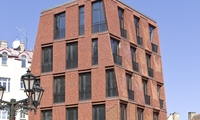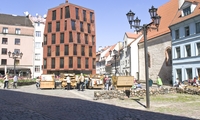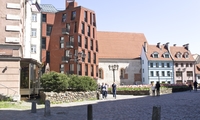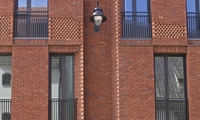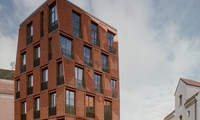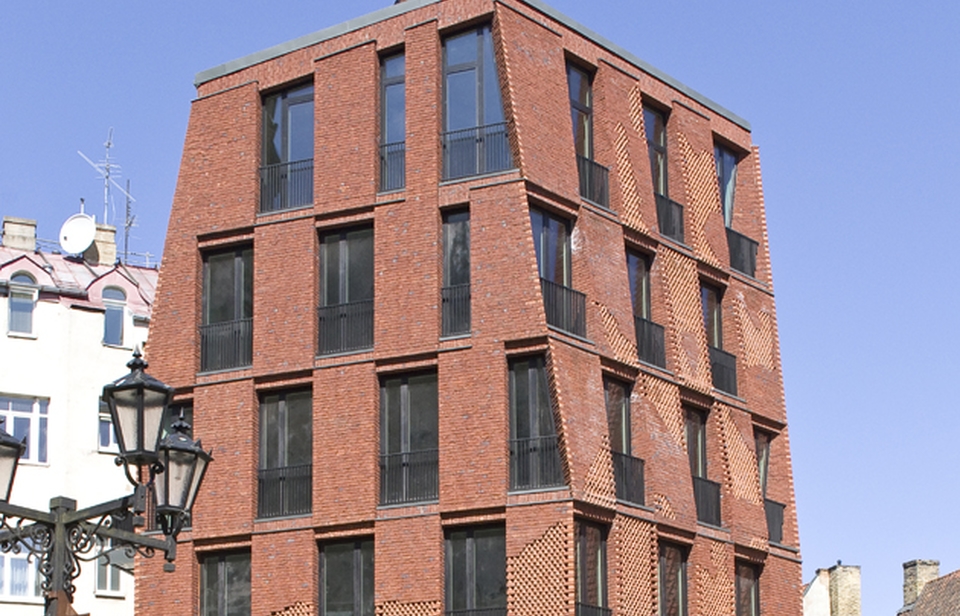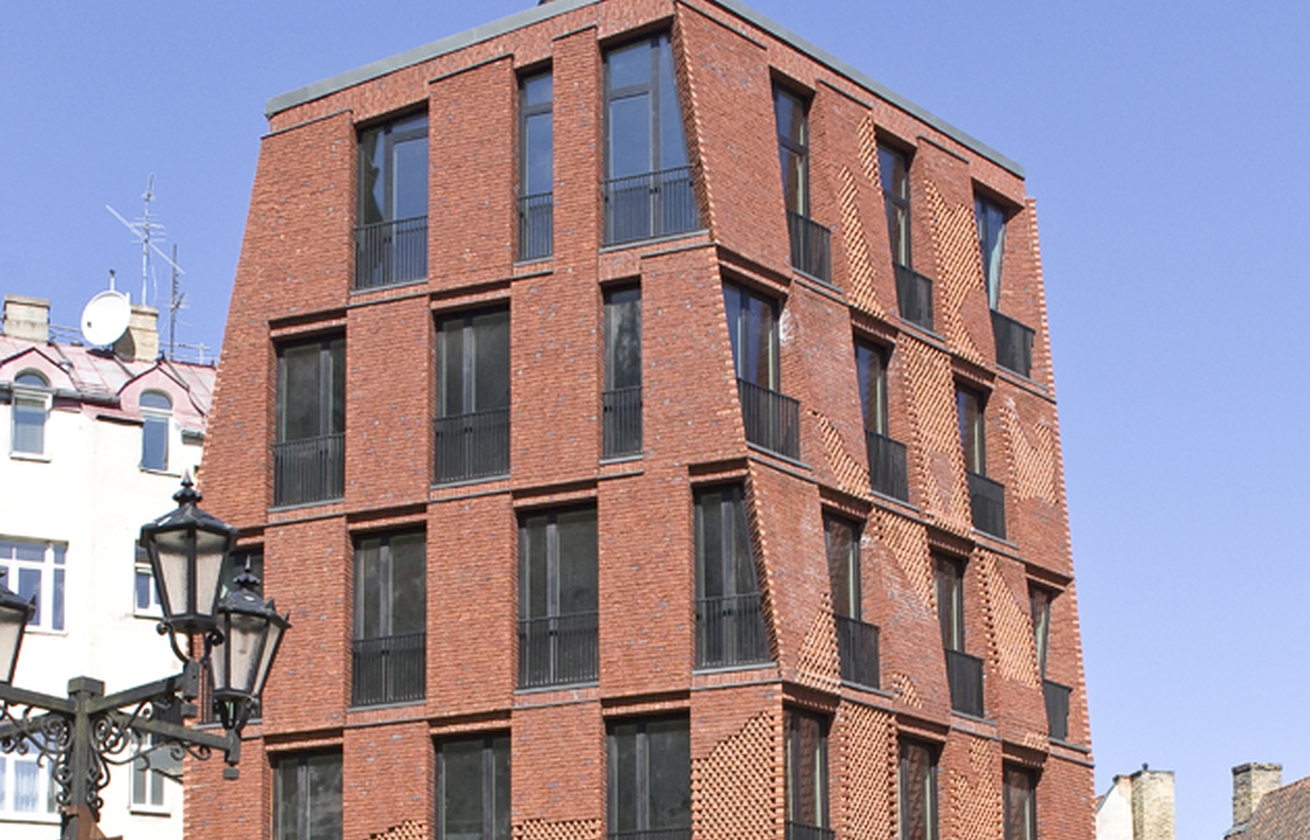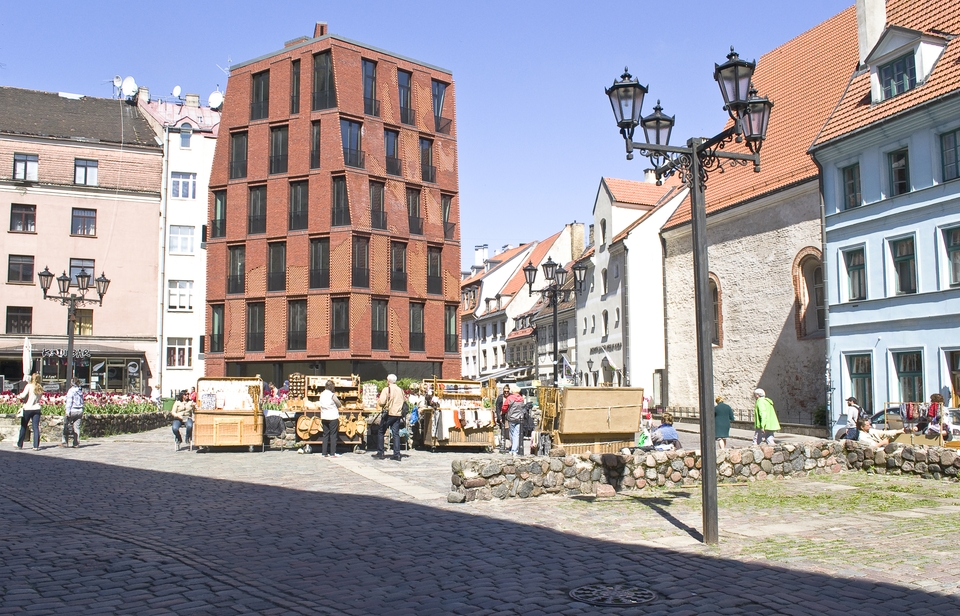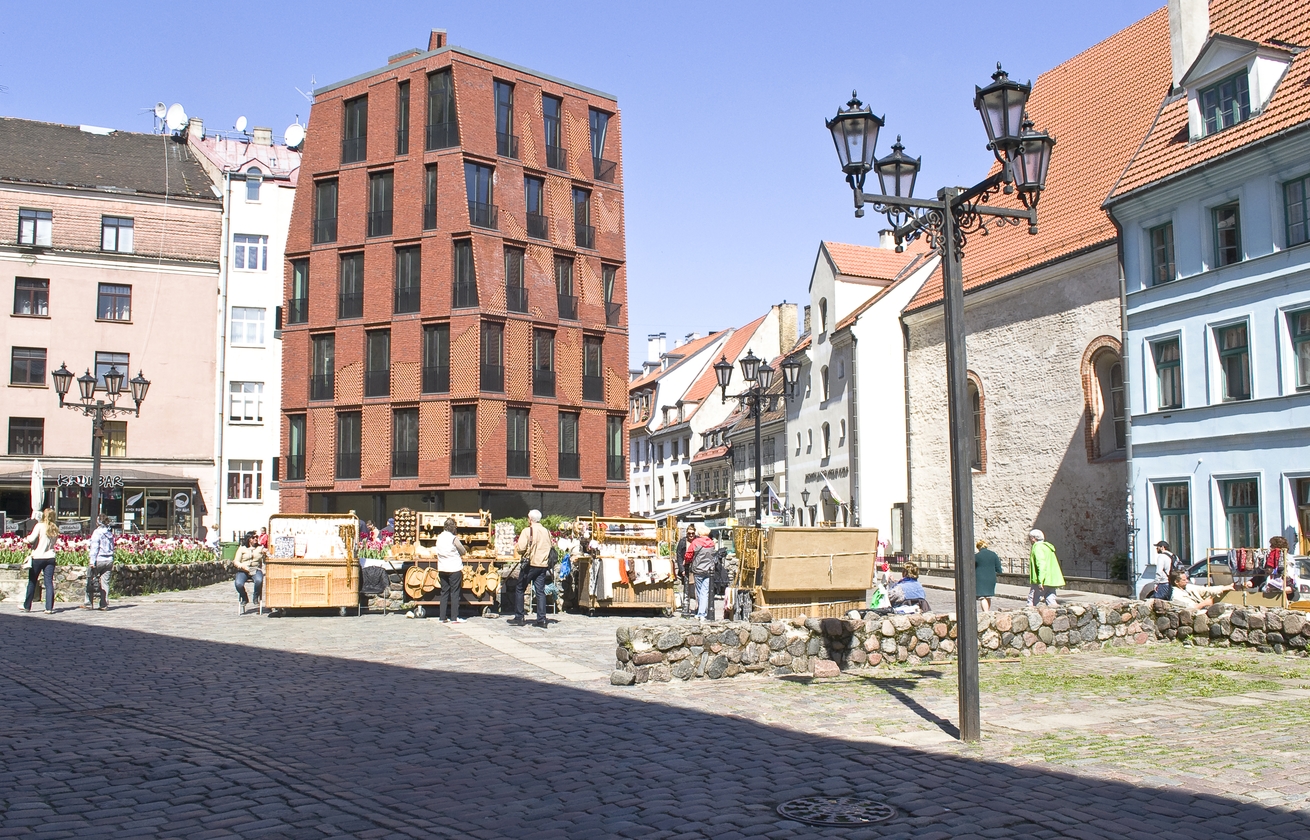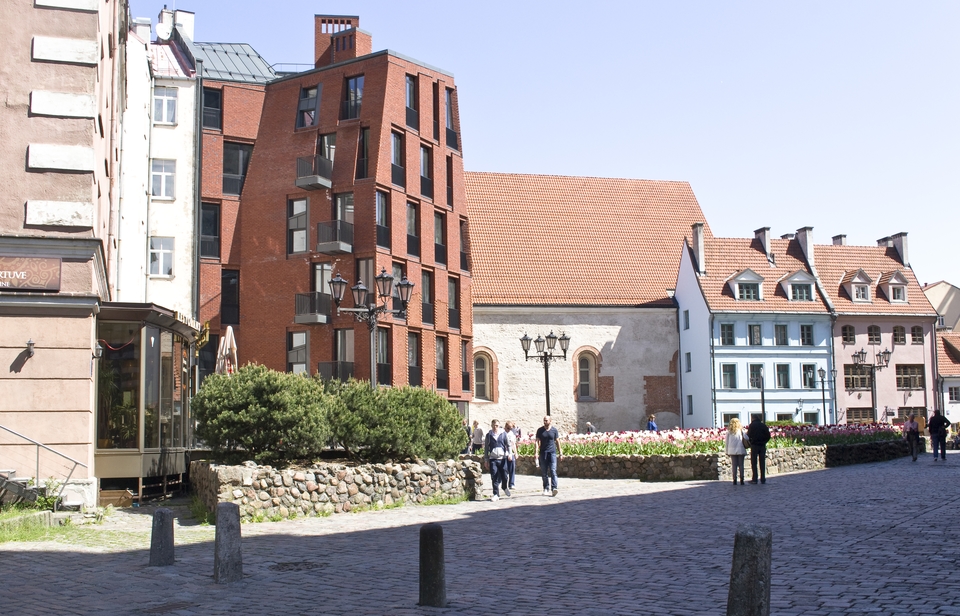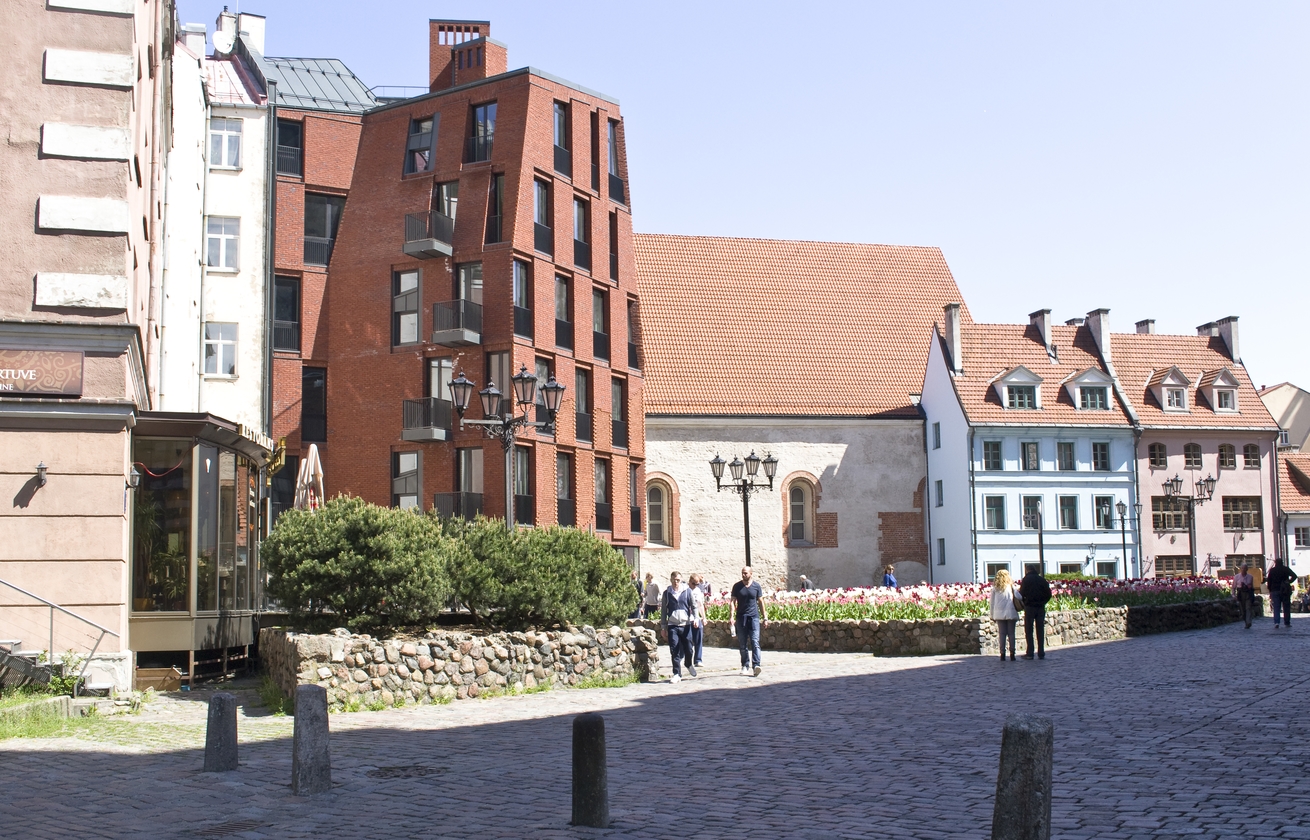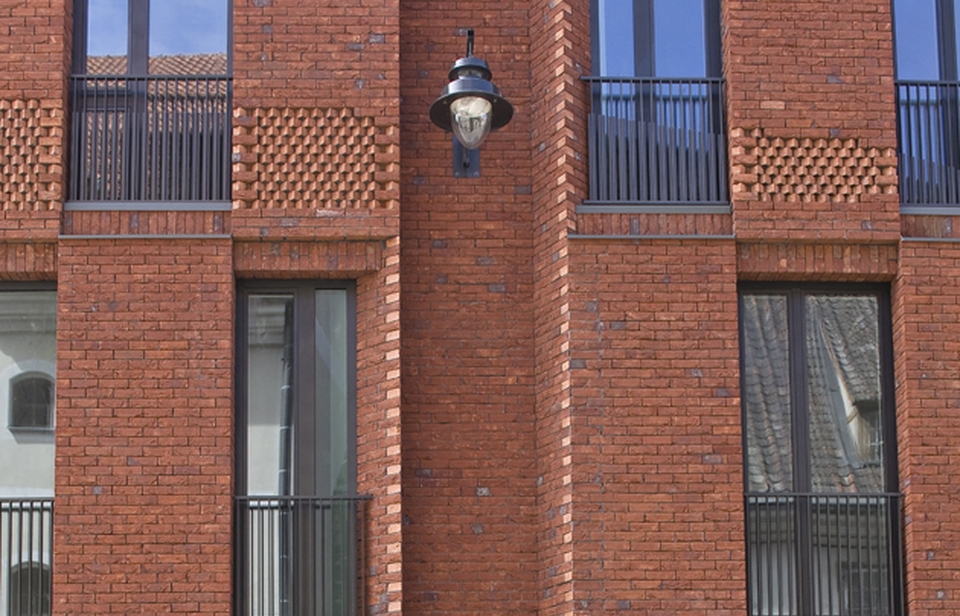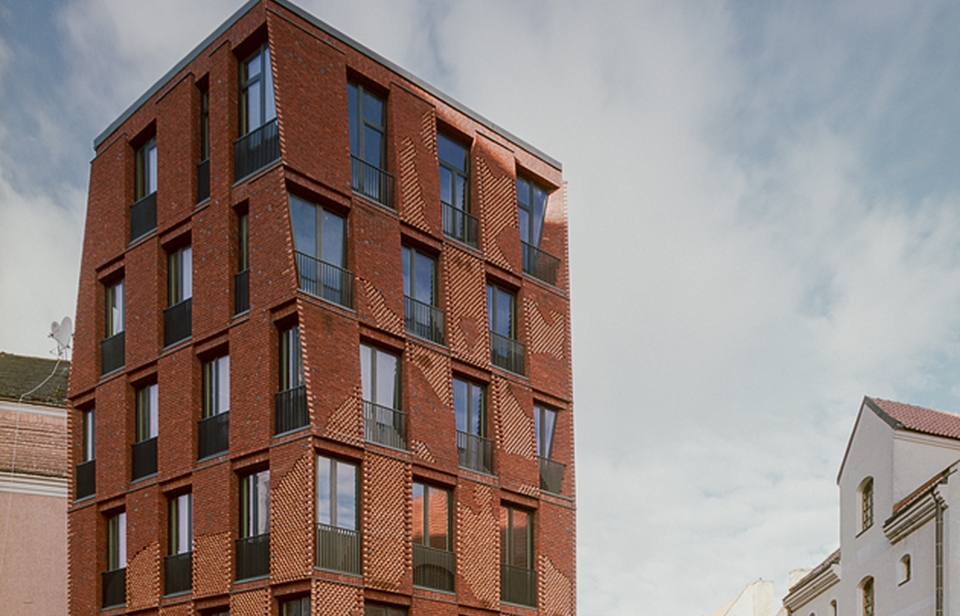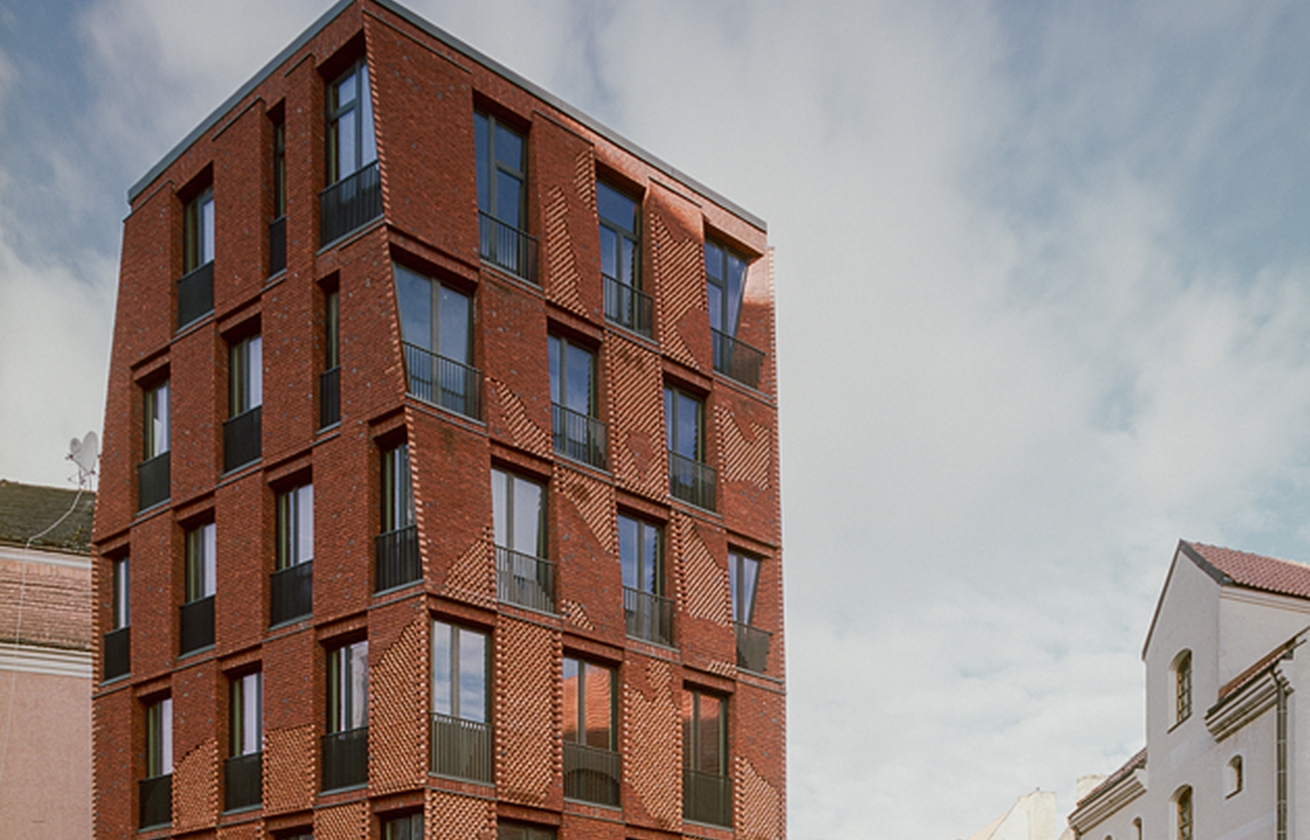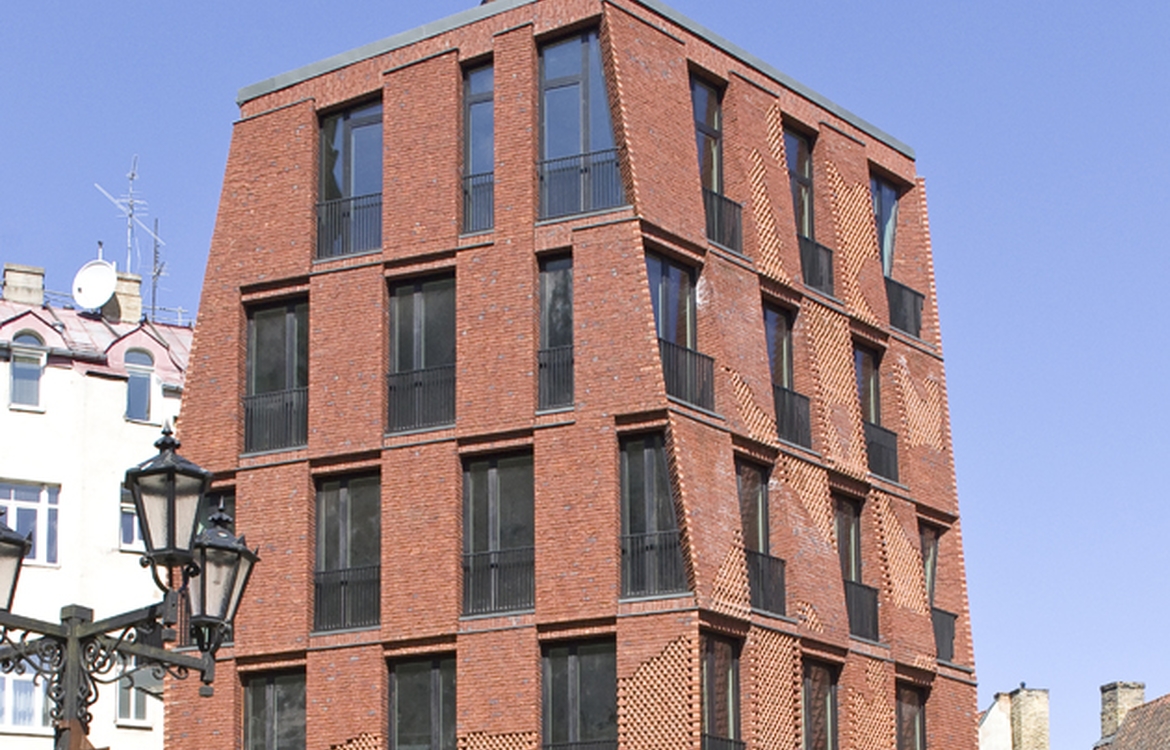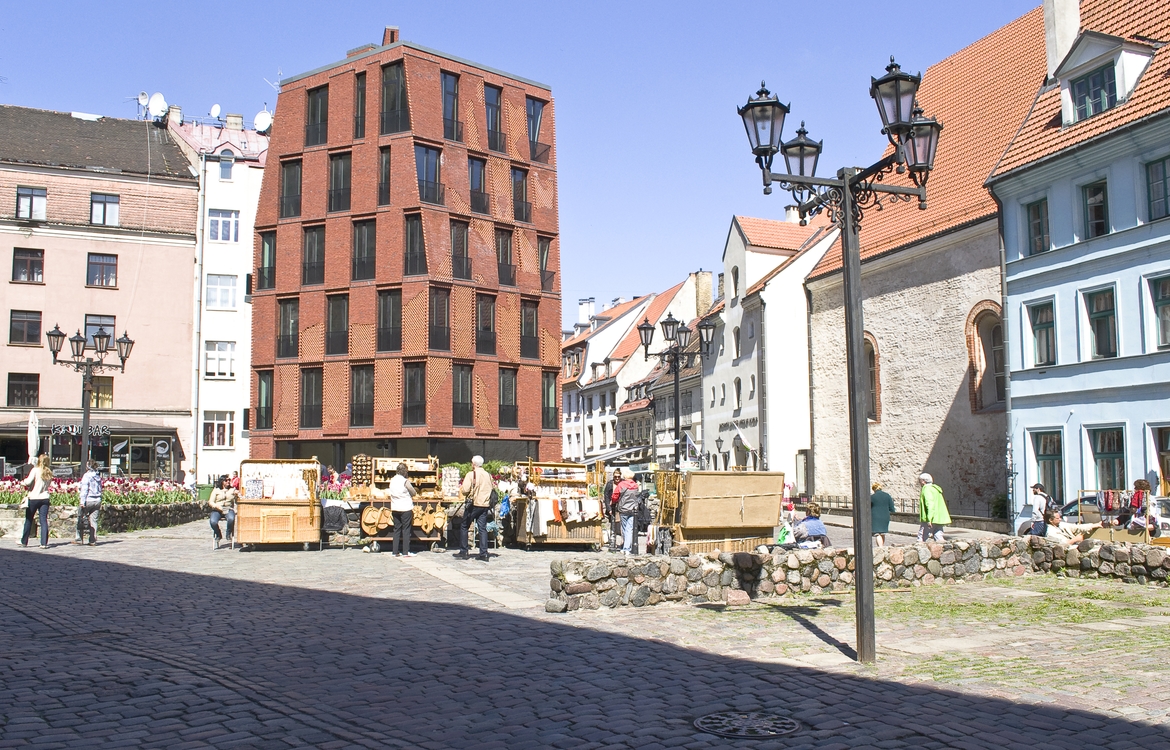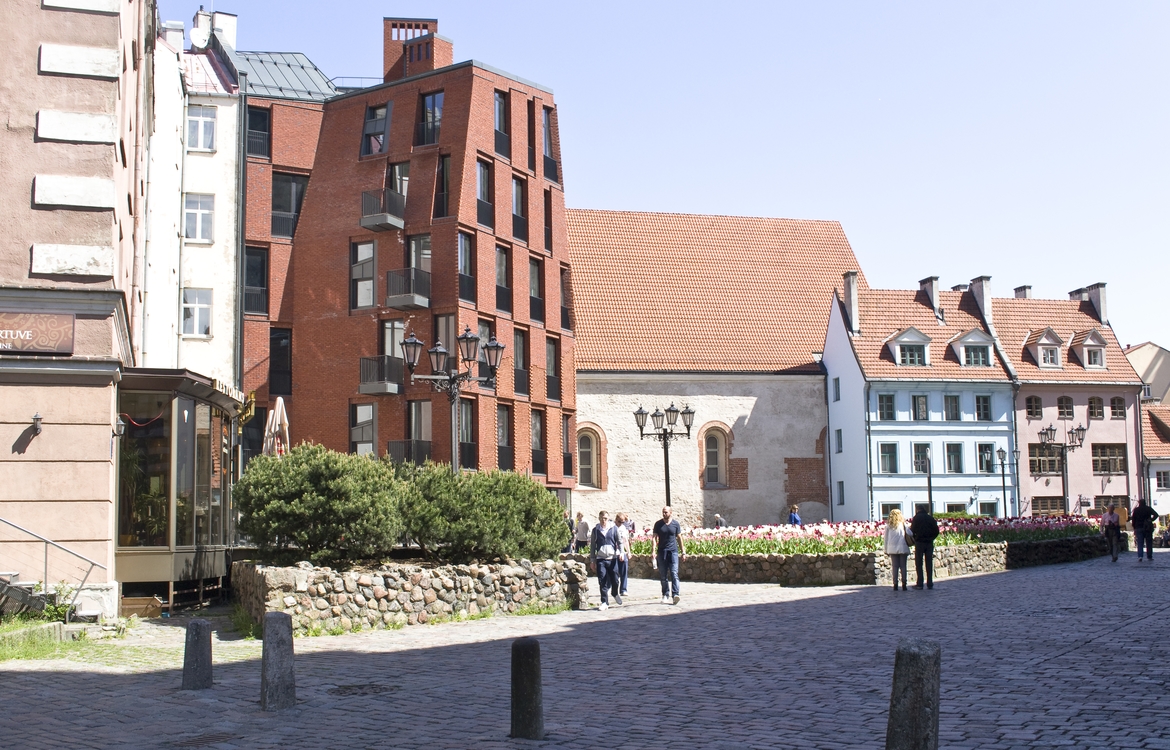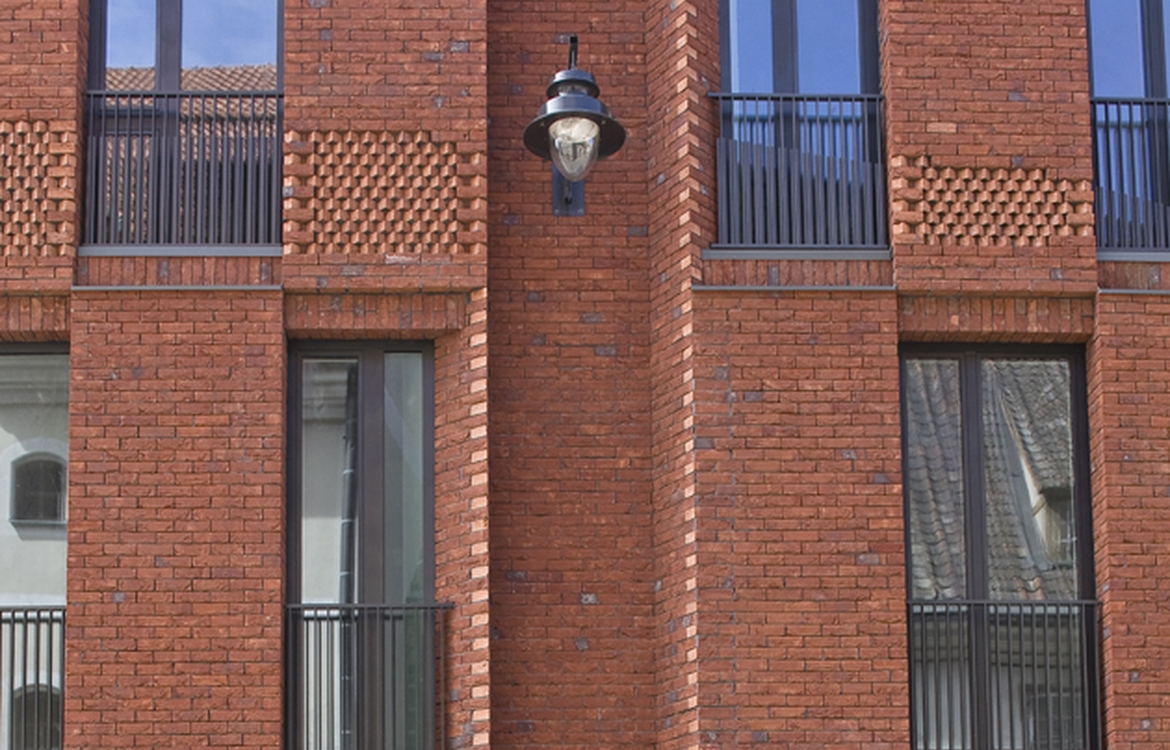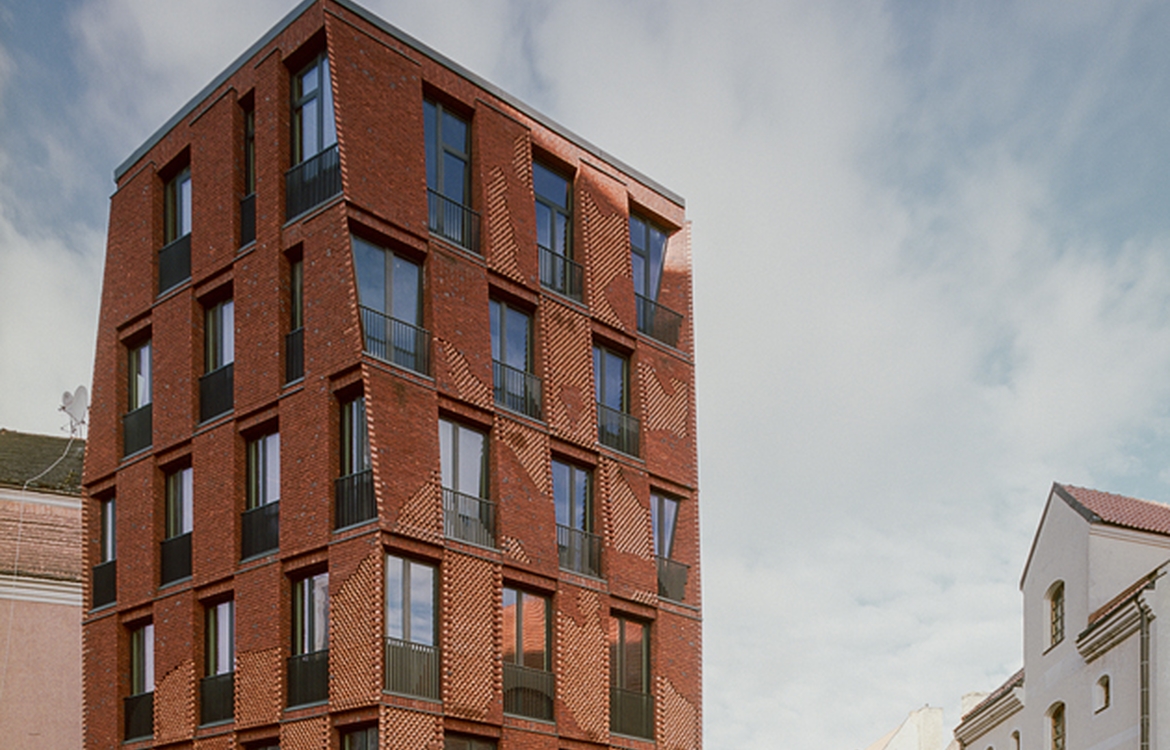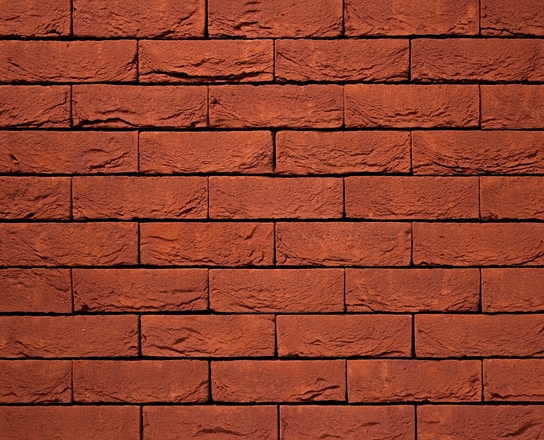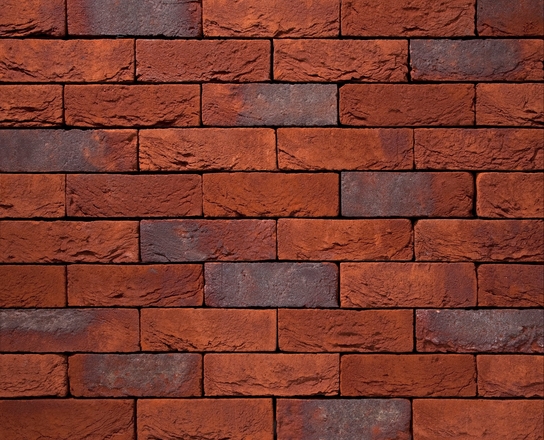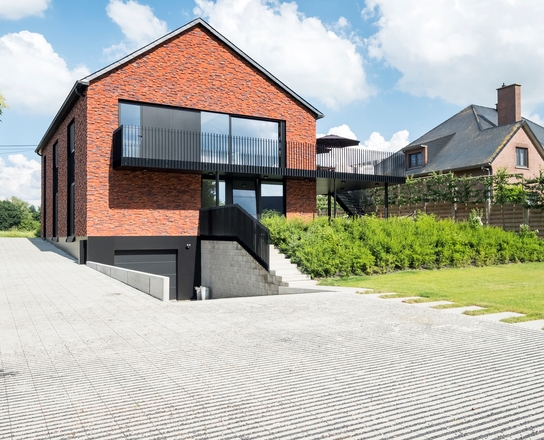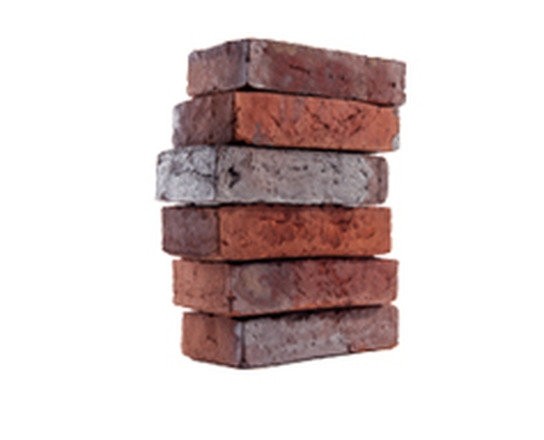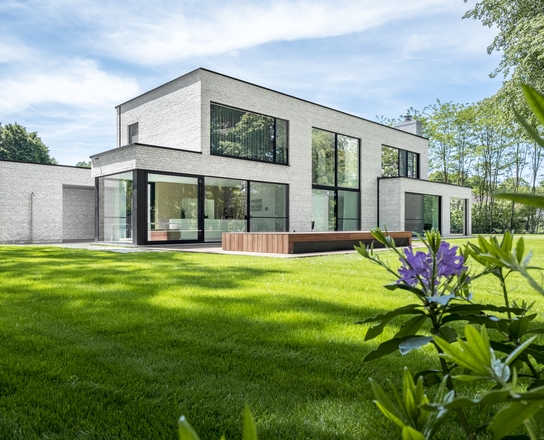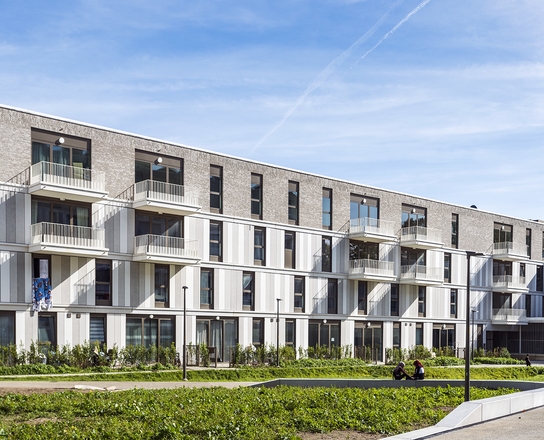Contemporary architecture in perfect harmony with the historical context (LV)
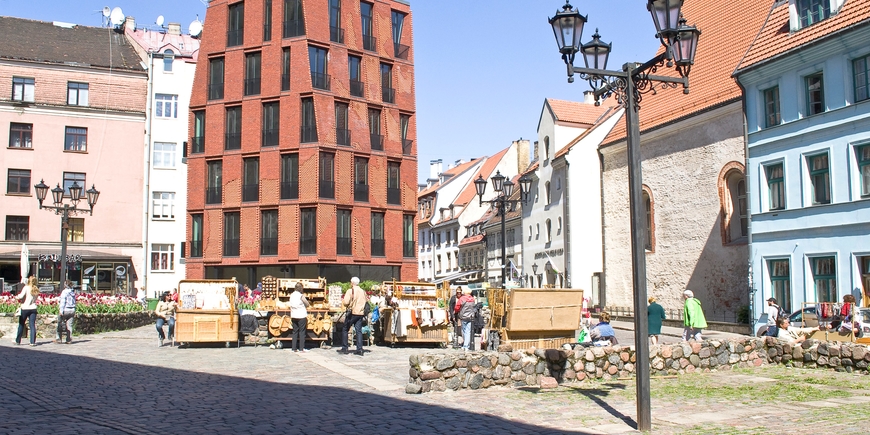
Designing a new building for the historic centre of Riga, Latvia, is nothing short of a challenge. New architecture in the old part of the town is something that is very rarely seen – locals and tourists alike prefer the style of a typical Latvian town. But a new residential project on Skarnu Street is proof that new is possible – contemporary architecture in perfect harmony with the historical context.
A rich brick past
The new Latvian project is bold, beautiful, and in brick. In Latvia, brick is a popular but overlooked material. The city’s older buildings are reminiscent of a rich brick past. :The new premises is built on the foundations of a building that was completely destroyed during the Second World War, when the city came under heavy bombardment. The layers and use of special bricks in the façade are a reminder of that past. The majority of the older buildings in Riga’s historic old town are protected three times over – by the city itself, at national level, and by UNESCO and the old town and its surroundings are a World Heritage Site. The location of the new project has another special angle, being not only the oldest site in the city but also the starting point of the local architecture.
Special bricks – bricks for atypical façades
It was an international architectural competition in 2006 that set the project in motion. The competition’s aim was to design a building with characterful visual aesthetic elements that respect the harmony between old and new. The special bricks help to create a ‘damaged’ effect through relief, a nod to the once destroyed façades. Special bricks are ideal for façades with unusual corners or rounded walls with smaller diameters.
The pattern was specially designed with a graphic designer to help create a fitting look. The colours of the bricks used are a mixture ofBoston and Brabant.
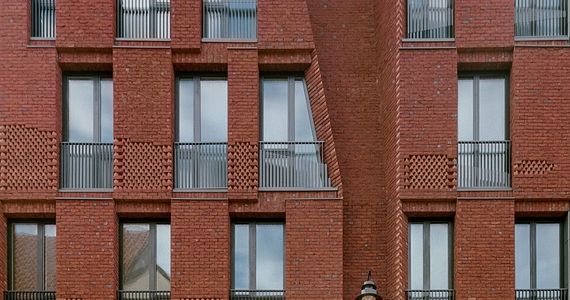
A view on the most famous buildings in Riga
The building, which has six apartments over a commercial space on the ground floor, has been developed and constructed over the past ten years. Situated in the heart of the city, the five façades look out onto several of the most famous buildings in the city’s local heritage, including the thirteenth century St. John’s Church, the oldest in Riga, and St. Peter’s Church, also known as the Museum of Decorative Art and Design.
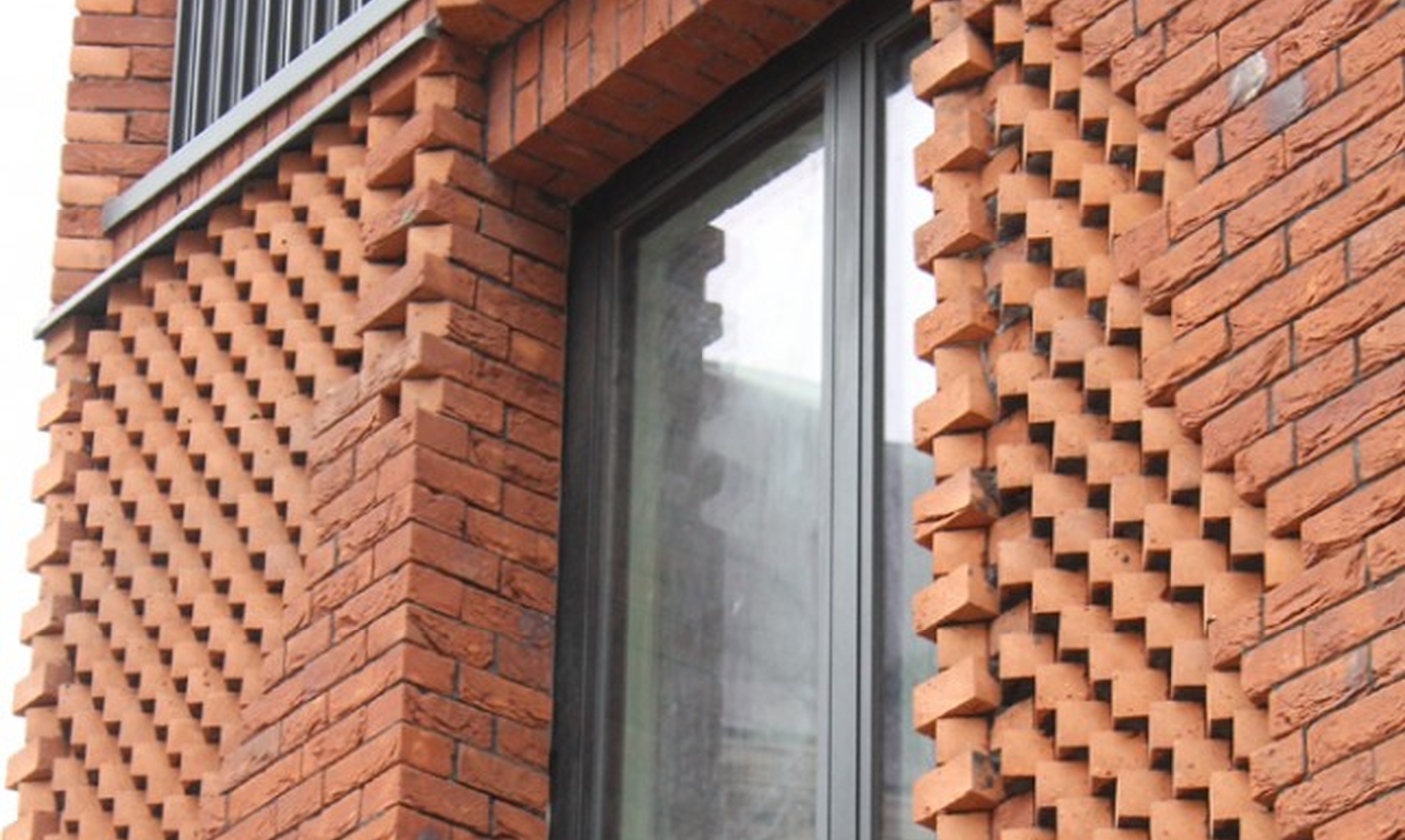
An essential component of the project was the need for the building to withstand Latvia’s harsh winters, and bricks from Vandersanden were certainly up to the challenge.
Choice of material was influenced by extreme Latvian winters
Although brick seemed a logical choice for the façade material, many competitors were eliminated during the tendering phase. A number of materials and façade systems were tried and tested, but there was only one – brick – that met all the requirements, including lifespan and flexibility. Architect Mārtiņš Jaunromāns explains, ‘We worked with samples, which allowed us to verify the structure and colour of the brick in the environment and in the different lighting conditions during the day and at night. That only helped to confirm our first and last choice – brick. The material also needed to be up to the challenge of withstanding the fierce Latvian winters, and Vandersanden’s brick got a thumbs-up there too.’
Product information
- Architect: Jaunromāns un Ābele (Mārtiņš Jaunromāns, Māra Ābele, Ieva Skadiņa, Jolanta Šaitere, Liene Daņilēviča)
- Client: Dekarta Property
- Graphic designer: Edgars Zvirgzdiņš
- Structural engineers: IG Kurbads, Bautopas
- Façade: Boston and Brabant


